human telemetry suit
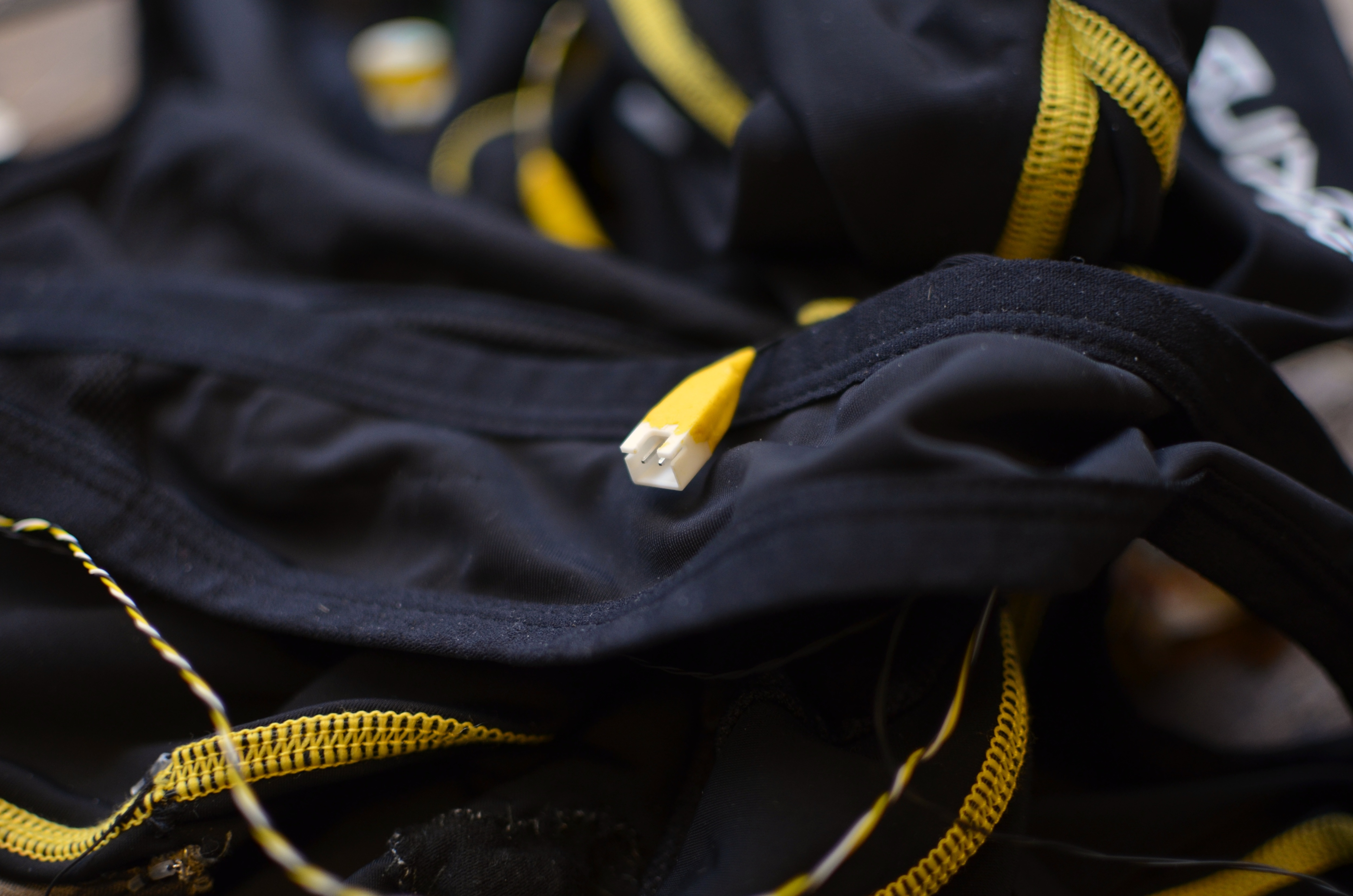
Close-up of ruggedised sensor connector integrated into the Suit
Third year Design Make & Test (DMT) group project at Univerisity, as part of the Rio Tinto Sports Innovation Challenge.
The aim of the project is to “make a tangible contribution to Paralympic sport and healthy lifestyles for people with disabilities.” We decided to create and develop a ‘human telemetry suit.' Dubbed the Integrated Sports Intelligent Suit (I.S.I.S), it is a simple, cost-effective, and universal tool to get feedback on athletic performance.
The project was supported by Madison, the UK’s leading distributor of bicycle parts and accessories, who supplied us with material to make our first prototypes with, in addition to constructive feedback.
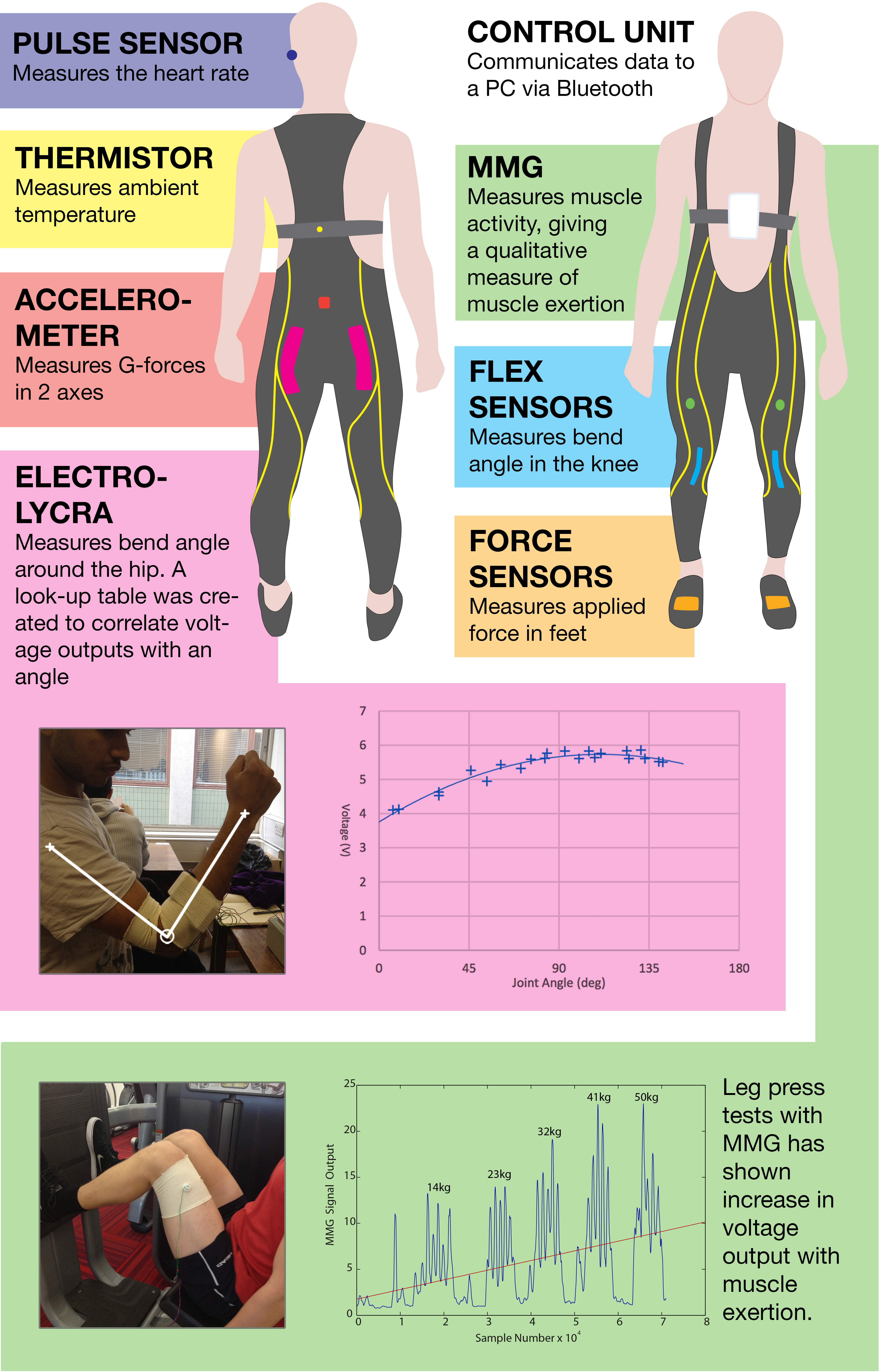
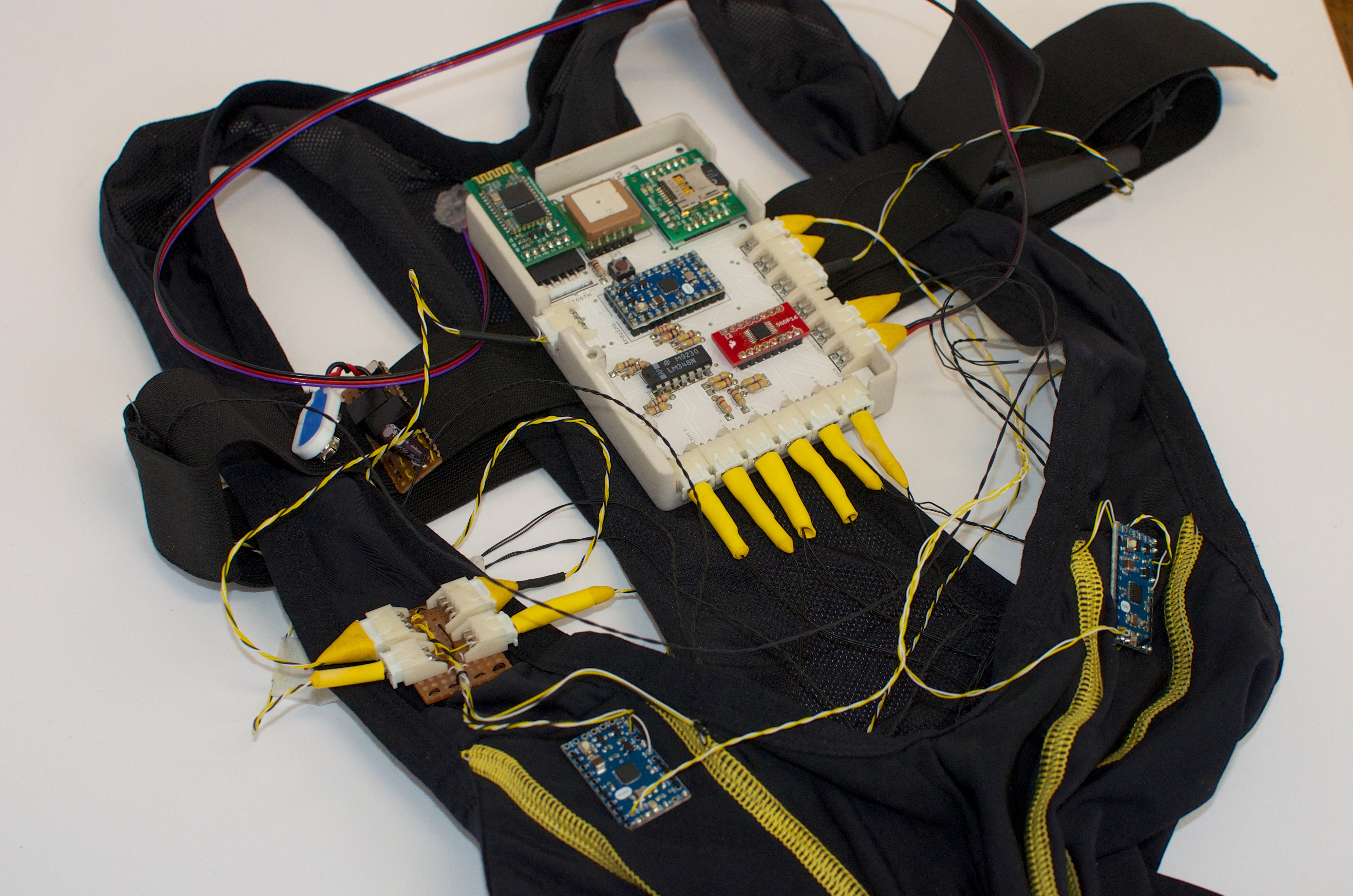
Overview of sensors used in final I.S.I.S. prototype
This suit uses specialist materials, an array of established and novel modular sensors, and numerous microcontrollers to measure and log motion and muscle activity. This would allow for athletes and parathletes to determine their movement when training in realtime, and compare different runs to improve their technique post workout. For the purposes of this project, it was decided to produce a working prototype of the lower-body part of the suit as a proof-of-concept.
Novel sensors include the use of electrolycra to measure hip motion, and the use of mechano-myograms to detect muscle activity - something not yet used in commercial systems.
While all group members were involved in all aspects of the project, my main responsibilities in the group were the development of the aesthetics and ergonomics of the Suit and software user interface, sensor design, sensor characterisation, sensor placement, electronic prototyping and general Arduino coding for data transfer.
Feedback from top athletes, such as gold-medal-winning cyclist Sarah Storey was indispensable in the early design stages.
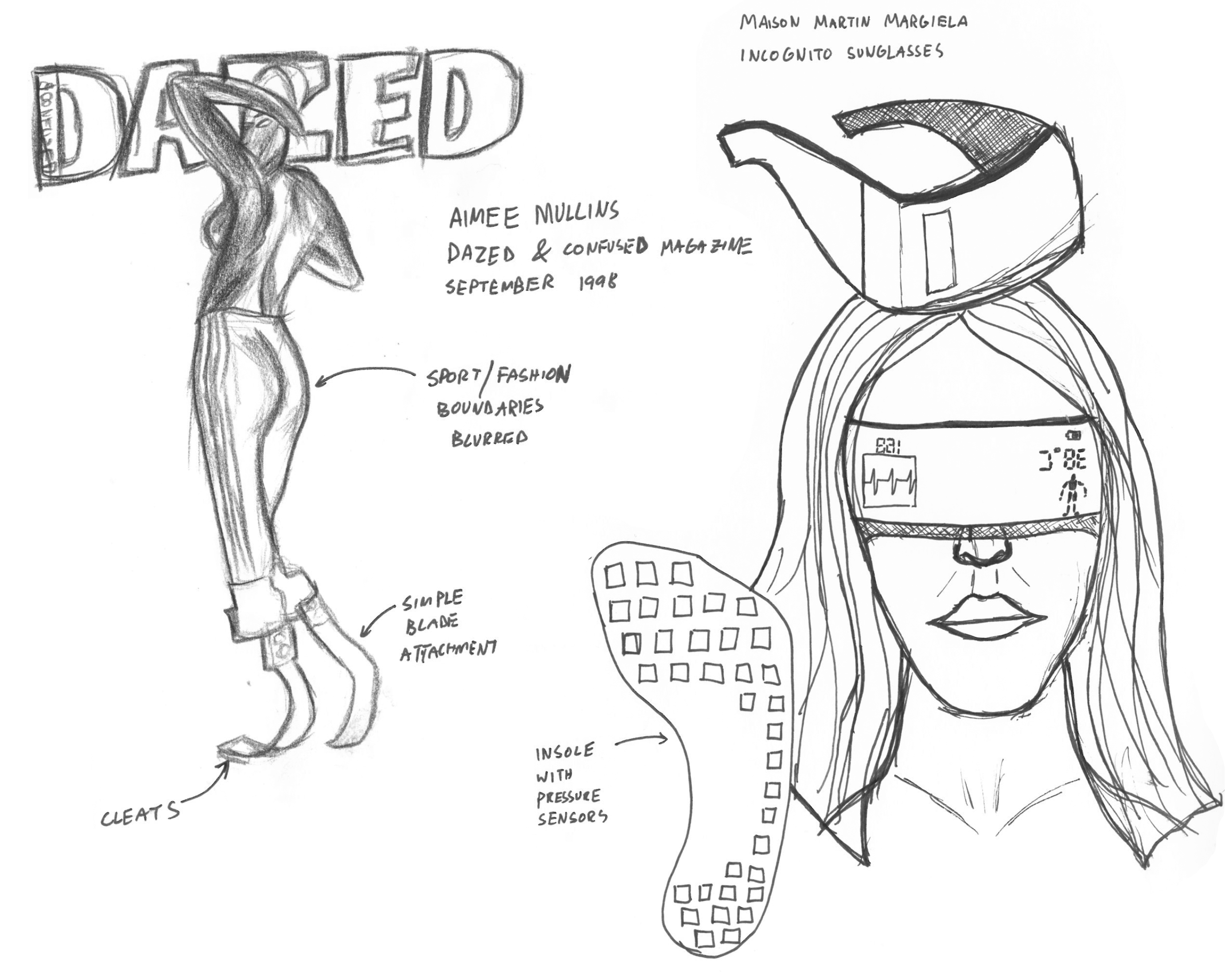
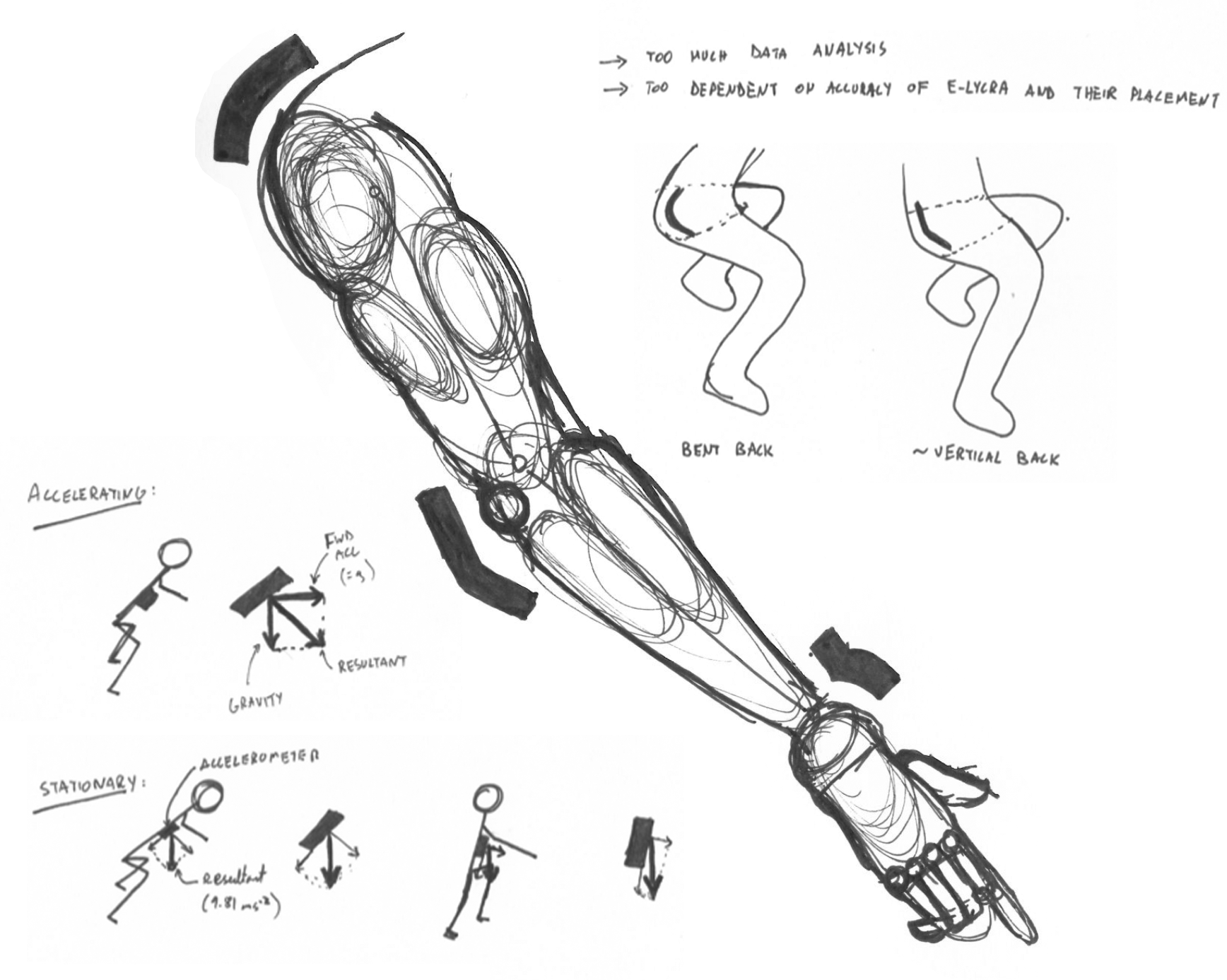
Gathering inspiration from various sources, such as fashion, helped the design team ideate aesthetic and interface concepts rapidly. This was then followed by more specific sensor concepts.
Integrated pressure-sensitive insoles used with graphical user interface (GUI) to determine cycling cadence and left/right foot balance.

Testing of movement sensors, comprised of flex sensors and novel electrolycra usage (top), with feedback from GUI.
Screenshot of overview PC GUI for final prototype; detail time-varied view of each sensor can be accessed by clicking the appropriate tile, as shown in 'Cadence Feedback' video.
Field testing of integration of various sensors in realtime with graphical user interface
Concepts for a mobile GUI were considered for future development, as they provide a more appropriate platform for real-time feedback in a dynamic environment.
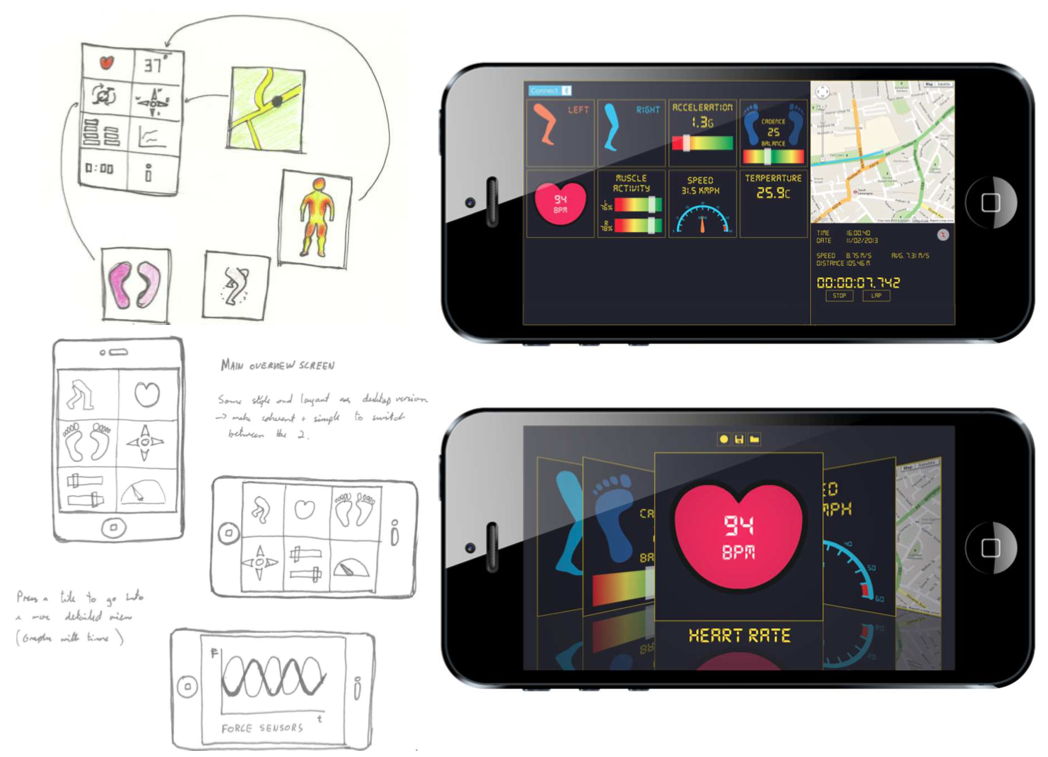
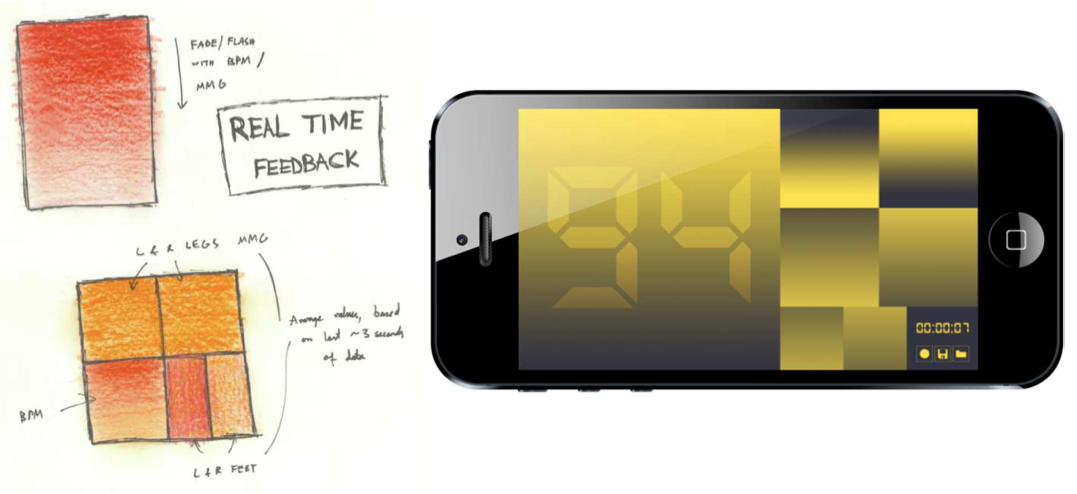
The design considerations for a desktop and mobile app can emphasise different aspects; in a mobile app, where the display is assumed to be a lot smaller, a simple, uncluttered interface could be more important than being able to display all the data simultaneously. As such, the type of data displayed could also be different, with different emphasis on qualitative versus quantitative data.